Saturday, January 29, 2011
Wednesday, January 26, 2011
From the VIP Art Fair to Art.sy, the Art Gallery Goes Digital - WSJ.com
Next weekend, art collectors sitting at computers in London, Toronto and Miami will find themselves face to face with the same work of art, a montage by American artist Robert Rauschenberg. The price for interested online shoppers: more than $1 million.
The question of whether top-tier art can successfully be sold online has long bedeviled the art world. High-end collectors have traditionally been leery of spending significant money on art they haven't seen in person, and a number of online-art selling ventures fizzled early on. But as more and more powerful art buyers emerge from Asia, Russia and the Middle East, the need to quickly reach collectors around the globe has never been greater. And dealers are looking for ways to reach a younger generation that's beginning to explore the art market—without alienating their best clients.
Now, some of the biggest names in the worlds of art and technology are betting that collectors will spend millions on paintings and sculptures that they've only seen online. A who's who of top galleries is taking part in the VIP Art Fair, an online-only event where potential buyers can shop for works by contemporary and modern artists like Jackson Pollock, Louise Bourgeois, Francis Bacon and Damien Hirst. Nearly 140 galleries from more than 30 countries—including blue-chip dealers like David Zwirner, Larry Gagosian and the Pace Gallery—have paid to host virtual booths.
Shopping Online for Great Works of Art
Google Chief Executive Eric Schmidt, Twitter chairman and co-founder Jack Dorsey and Russian mega-collector Dasha Zhukova are investing in Art.sy, a new service set to launch this spring. The site is designed to help collectors find art based on their personal preferences and past buying history, much the way the music site Pandora guides music lovers to new bands. Pandora CEO Joe Kennedy is advising the company, as is Mr. Gagosian.
Mr. Dorsey says the site will appeal to a tech-savvy generation that is beginning to invest in art. "Right now, you have an influx of younger folks who are looking to bridge what they're doing with sites like Twitter and Facebook and Foursquare and all these other companies with their other interests, which include art and paintings and drawings and sculpture," he says.
Collectors now seem increasingly prepared to spend big sums for art online. At Christie's, which offers real-time, online bidding at nearly all of its auctions, a Shang Dynasty wine vessel fetched $3.3 million in September, breaking the house record for an item purchased with an online bid. Last month, Saffronart, an online auction house dedicated to Indian art, sold a $2.2 million oil painting in pastel colors by Arpita Singh entitled "Wish Dream."
Where to Buy Art Online
- VIP Art Fair will take place entirely online with work from nearly 140 galleries, Jan. 22-Jan 30. vipartfair.com
- 20x200 sells limited-edition prints ranging in price from $20 to $5,000. 20x200.com
- Artnet, which provides a price database and research material on the art market, restarted its online auctions two years ago. artnet.com
- Art.sy, set to launch in the spring, aims to match collectors with art based on their personal preferences.art.sy
A new wave of digital art ventures is launching as the art market begins to pick up steam again. Auction houses Sotheby's and Christie's sold more than $9 billion worth of art combined last year, nearly doubling their sales from the year before. Prices are climbing again for contemporary art, which fueled much of the art market's last boom before the recession hit.
Mark Vanmoerkerke, a private equity and real-estate investor in Oostende, Belgium, sees the Internet as the next logical step in an increasingly global art market. "Me, I'm in faraway Belgium and not everyone lives in New York or London, so I'm used to buying online," he says.
For dealers, a virtual art fair can be an appealing way to reach a broad audience at a fraction of the cost of participation in a traditional fair. Amid the economic downturn, some smaller galleries opted to sit out prestigious fairs like Art Basel Miami Beach, where booth rental costs range from $10,500 to $65,000. At the VIP Art Fair, set to run from Jan. 22 to Jan. 30, galleries have paid between $5,000 and $20,000 for virtual booths.
Because shipping costs to a booth won't be an issue, the Gagosian Gallery is plucking works from its outposts in Athens, Los Angeles, Paris, London, Rome and New York for the online fair. The gallery plans to offer items too unwieldy to bring to a physical fair, like a 17-foot-high aluminum sculpture by Franz West that looks like a giant pink string with a knot in it. Employees at Gagosian offices across the different time zones will be able keep the virtual booth staffed nearly around the clock.
A screenshot of a preview gallery at the VIP Art Fair.
On a recent afternoon in the offices of the VIP Art Fair, located four floors above the bustling flower district in Manhattan, Gagosian Gallery art dealer Cooke Maroney sat before a wide-screen computer and practiced setting up virtual private viewing rooms for elite clients at the fair. On his screen, a gray figure depicting a visitor at an art gallery appeared next to each piece of art, changing size to show the works at human scale.
To succeed, organizers say the online fair needs to walk a fine line between offering access to newcomers and exclusivity to collecting veterans. Participating galleries have sent invitations to their active clients, giving them instant-messaging privileges with dealers and potential access to a wider variety of works. The largest booths will publicly display 20 out of 100 works on offer; the rest they will show only to their best clients in private online viewing rooms. Visitors without invitations will be able to browse for free, but must pay $100 for a pass at the start of the fair to see price ranges for the works and interact with dealers through the site.
Buyers won't drag a painting into their virtual "shopping cart" or buy through PayPal; instead, they'll contact the dealers by instant message, email or phone to arrange a sale.
"It is still a world of high art, and there is an elitism that goes along with that," says James Cohan, a New York art dealer and the fair's co-creator. He and his wife, Jane, founded the fair with Internet entrepreneur Jonas Almgren and Mr. Almgren's wife, Alessandra.
![[COVER_JUMP1]](http://si.wsj.net/public/resources/images/WK-AW563_COVER__DV_20110113213402.jpg) David Zwirner, New York
David Zwirner, New YorkDavid Zwirner plans to offer 'Haus des Lehrers' by Neo Rauch at VIP.
Mr. Cohan signed on the David Zwirner gallery last spring. He says he won over the gallery with a PowerPoint presentation that showed a mocked-up version of a David Zwirner virtual booth, complete with examples by the gallery's major artists. It included a massive painting by Luc Tuymans called "Ballroom," valued at more than $1 million, that depicts a mural of palm trees reflected on a highly polished floor. Mr. Cohan was soon en route to London, Berlin, Sydney, Tokyo and elsewhere to personally lobby dealers to come on board.
Mr. Vanmoerkerke, the collector, is drawn by the idea of not having to sprint through a sprawling venue to get to the best art first—a common sight at art fairs in the boom years. "Maybe online you won't need to be like Clint Eastwood with the fastest draw," he says.
One thing the online fair lacks, however: the electricity of art-world insiders gathered in one place and watching each other's next move. When Brad Pitt huddled with collectors Eli and Edythe Broad before buying a nearly $1 million painting by German artist Neo Rauch at Switzerland's Art Basel two years ago, for instance, he set the event abuzz.
"It'll be interesting to see how it does without all the air-kissing in the aisles that you get at other fairs," says Dennis Scholl, a Miami-based collector of contemporary art who received a VIP invitation to the fair and plans to check it out. "I don't know if they'll be able to recreate that energy. They might."
Some collectors still wrestle with the notion of buying a work they haven't seen up close. "There is so much out there to buy, why bother with something you can't see in person?" says London-based contemporary art collector Tiqui Atencio, an art-fair regular. She says she rarely purchases an artwork without personally inspecting it first, but she plans to browse at the VIP Art Fair.
'The Sledding Hill (Dusk)' by Joseph O. Holmes, above, is offered on 20x200.com.
Tony Podesta, a Washington lobbyist and contemporary art collector, purchases up to a fifth of his art sight unseen, based on digital photos. But he's made some miscalculations. He and his wife are now living with a giant Campana Brothers couch made of stuffed animals that was far larger than they anticipated after viewing a JPEG of the image on an auction-house website. "I think we thought it was like a regular-size couch," he says. "It turned out to be a much more substantial creature."
Online art sales have followed a rocky path. Sotheby's launched an online auction site in 2000 to much fanfare. That year, the site sold an original copy of the Declaration of Independence to sitcom legend Norman Lear for $8.1 million. The sale seemed a promising omen for future online sales, but even then, there were signs of trouble: Lara Bergthold, the executive director of the Lear Family Foundation, was so worried about her spotty Internet connection that she flew from Los Angeles to New York to put in Mr. Lear's bid from a computer in a Sotheby's vice president's office.
Ultimately, Sotheby's struggled to convince sellers to consign their trophies to an online auction. In 2003 it ended its online sales venture at a loss of $100 million. Last year it began offering real-time online bidding for all its world-wide sales, and in December sold a $1.1 million platinum-and-diamond necklace to an online bidder in Asia.
Internet art database artnet closed its online auction business after two years in 2001 at a total loss of $11 million, says Bill Fine, president of artnet Worldwide, but about two years ago he restarted the auctions, believing that people now are more comfortable buying luxury goods online. He says the online auctions sold more than $12 million in art last year, though so far that venture has yet to turn a profit.
Art sites drawing a new generation of collectors focus on a carefully curated selection of lower-priced prints and photographs. Exhibition A, a recently launched online venture by New York art dealer Bill Powers, concentrates on contemporary prints. Another site, 20x200, founded in 2007 by New York dealer Jen Bekman, features photographers like William Wegman, known for his portraits of Weimaraners. Mr. Wegman attributes his strong online sales partly to the way his images look on a computer screen. "It's kind of luminous, in a way—it's very attractive, almost more than printed," he says.
Detail of Willem de Kooning's 'Woman." The work may be featured on Art.sy in the spring.
Other entrepreneurs see potential in a model that's already being used to sell music. Art.sy founder Carter Cleveland, a 24-year-old computer-science engineer whose art-obsessed father took him to galleries as a child, helped develop what he calls the "Art Genome," a mathematical framework using data provided by gallery professionals to help select new works for collectors based on their personal preferences. (One of Art.sy's investor/advisers is Wendi Murdoch, the wife of Rupert Murdoch, CEO of News Corp., which owns Dow Jones & Co., the publisher of The Wall Street Journal.) Art.sy will include works at a range of prices, including some big-ticket items. One work that may be featured on the site is "Woman," an abstract shock of yellow, blue and red by Willem de Kooning, valued at more than $7 million, offered by Acquavella Galleries.
Ms. Zhukova, who is the companion of Russian billionaire Roman Abramovich, is both an investor in Art.sy and the site's creative director. She says that until now online ventures haven't featured the best art. "In the past, the types of work available through online sales have been pieces that went unsold at exhibition," she wrote in an email. "Those portals aren't designed for discovering new artists or cultivating personal relationships with galleries."
Mr. Scholl, the Miami collector, isn't convinced that a computer model can predict an art lover's taste. "How can anyone tell you exactly how their head works when they look for art?" he says. "You collect via your subconscious, and it's hard to write an algorithm for that." He paused for a moment, then added, "The funny thing is, I use Pandora all the time."
by Ellen Gamerman and Kelly Crow The Wall Street Journal January 14, 2011
Sunday, January 23, 2011
Lynn Tilton named 'Aviation Entrepreneur of the Year'
Now Lynn Tilton has been named America's "Aviation Entrepreneur of the Year," one of the flight industry's most prestigious honors.
She was praised for her turnaround of MD Helicopters as she was presented the award Friday in Beverly Hills at the Eighth Annual Living Legends of Aviation Awards ceremony, which is often referred to as the aviation industry's Academy Awards.
"I am both humbled and honored by this valued recognition in an industry that attracts so many talented leaders and great warriors," she said.
"Once tempted, it is difficult not to fall in love with aviation and to devote oneself fully to the mission at hand."
Tilton, 52, was selected by the 70 Living Legends of Aviation, a group of aviation entrepreneurs, innovators, industry leaders, record breakers, astronauts and pilots that meets annually to recognize individuals who have made significant contributions to the field.
The awards gala is produced by Kiddie Hawk Air Academy, a non-profit organization that introduces children to aviation and encourages them to study science and math disciplines that are essential to aviation's continuing evolution.
Awards were to be presented by celebrities such as Morgan Freeman, John Travolta, Harrison Ford and Capt. Chesley "Sully" Sullenberger, who was praised for his heroism after piloting a US Airways flight that landed safely on the Hudson River in 2009.
Tilton, a single mom, industrialist and globe-trotting executive, is founder and chief executive of Patriarch Partners LLC, which is based on Wall Street. She also serves as chairwoman and CEO of MD Helicopters, one of Patriarch's portfolio companies and a firm founded by aviation pioneer Howard Hughes.
Since acquiring the company in August 2005, Tilton has led MD to profitability.
It delivered more than 50 helicopters in 2008, just three years after Tilton inherited the company's shuttered production line and shattered supply chain.
MD has been recognized as an industry leader in customer service and support of its more than 3,000 aircraft in operation around the world.
"I'm thrilled for her recognition in the aviation field," said Bill Jabjiniak, Mesa's economic-development director. "But it is her business acumen that is exceptional, and that is demonstrated by MD Helicopters here in Mesa.
"You have to give her all the credit in the world. She called this economic downturn (before it happened), and she survived it and things are looking good for MD and her other companies."
Since Tilton founded Patriarch in 2000, it has bought more than 150 companies, including Dura Automotive, American LaFrance, Denali, and purchased iconic brands such as Rand McNally, Spiegel Catalogs and Stila Cosmetics.
She has specialized in buying down-and-out industrial companies and revitalizing their manufacturing operations with new management teams and products.
She also has served as an advocate for U.S. manufacturing interests.
With more than 120,000 employees, Patriarch has become the largest female-owned business in America, and Tilton is regarded as one of the richest self-made women in the country.
by Art Thomason The Arizona Republic Jan. 23, 2011 12:00 AM
Lynn Tilton named 'Aviation Entrepreneur of the Year'
Saturday, January 22, 2011
Lillian Wong and Associates VCard
Monday, January 17, 2011
Rich Pellegrino - Illustrator
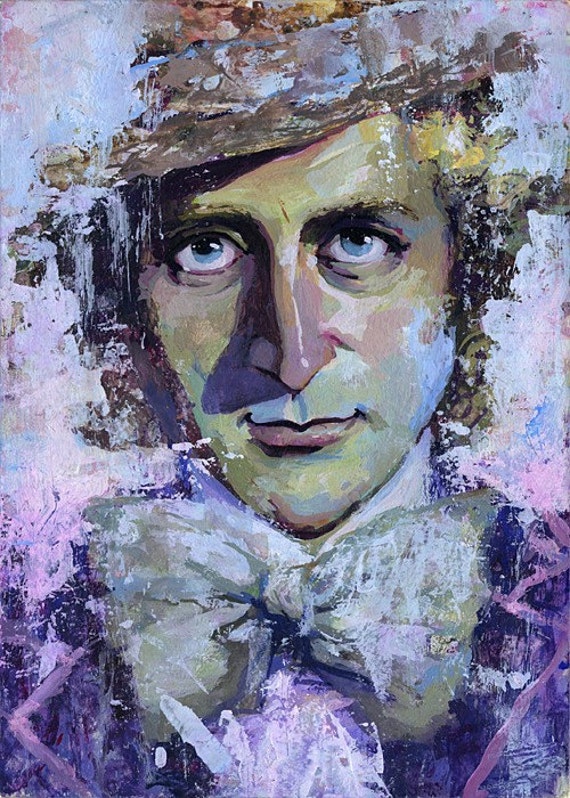
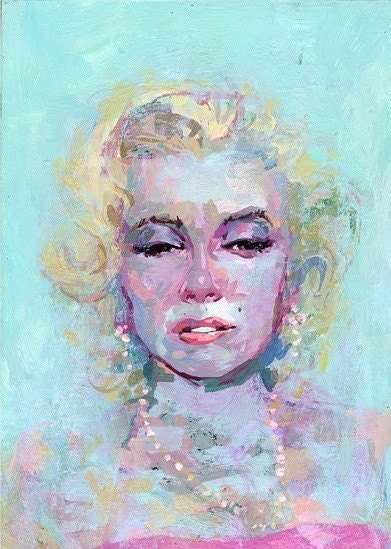
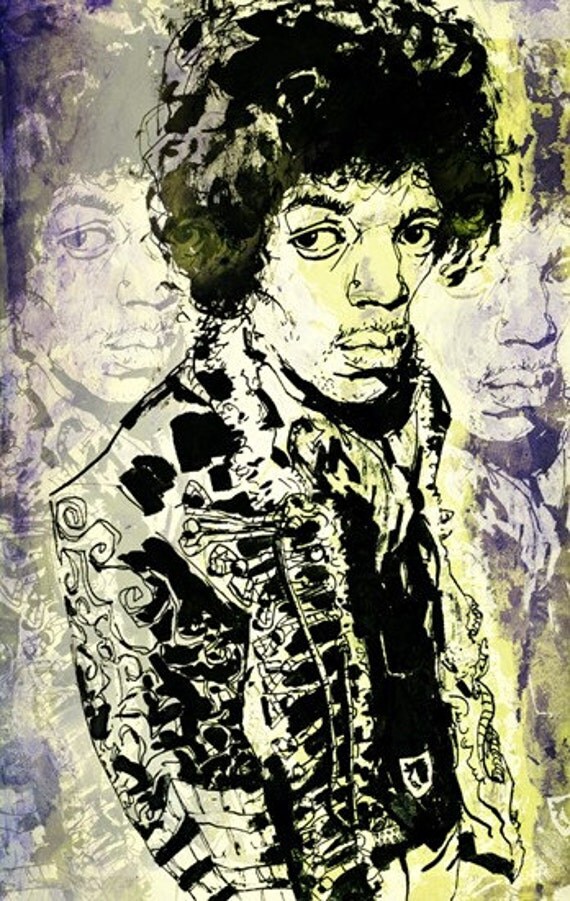
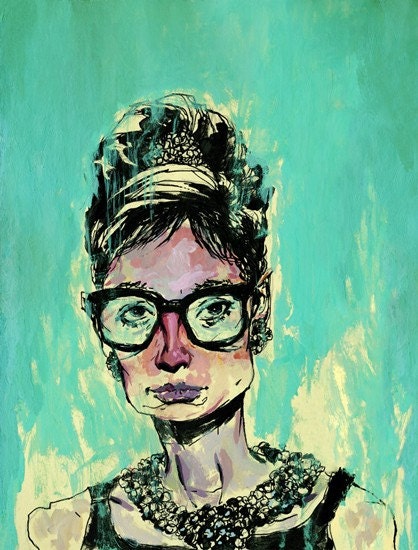
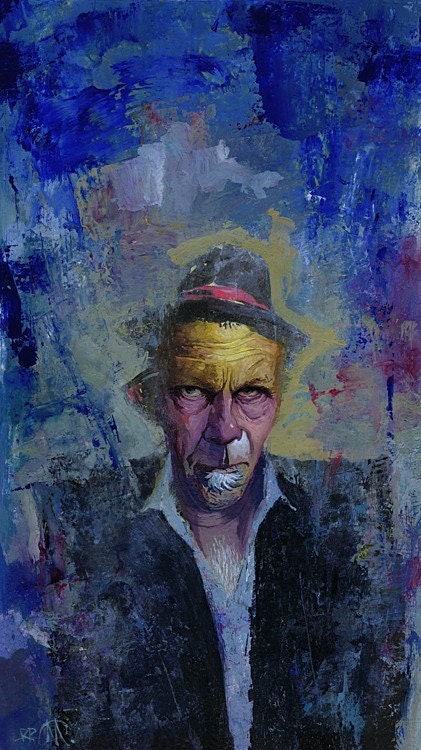
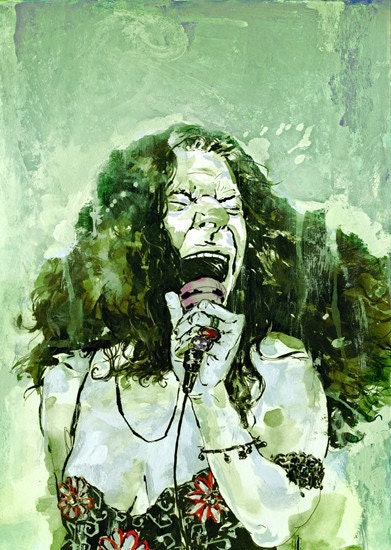

Mackay: Less pay may be the path to opportunity
Maybe that's the wrong question. Maybe you should be asking, what less would you be willing to take?
A 2009 CNN Money report says, "With more than three job seekers for every opening, more workers are having to take significant pay cuts to find employment."
Current employment figures are not much brighter. Experts predict we will not see job numbers improve to pre-recession levels for at least five years. And though unemployment benefits have been extended, they are no match for a rewarding, fulfilling job. That's a message I hear repeatedly as I release the paperback edition of my book, "Use Your Head To Get Your Foot in the Door: Job Search Secrets No One Else Will Tell You."
Many are out of work through no fault of their own and can't afford to wait for the dream job to open. Others discover the jobs they had weren't right for them - too much responsibility, too many hours, burnout or philosophical differences. Whatever the reason, plenty of qualified people who are looking for jobs have real challenges convincing interviewers that they can work for less and be content.
Shrinking company budgets force managers to get maximum bang for the buck while finding ways to maintain or grow business. Hiring decisions have greater impact when fewer employees must carry the load. A bad hire can be disastrous.
Try to explain to a hiring manager that you are interested in taking a job that includes a pay cut, and a number of questions pop up. Were you overpaid at your last job? Will you jump ship the minute a more lucrative opportunity is presented? Will you be able to survive on a smaller salary? If you are such a bargain, why hasn't someone else hired you already? Are you willing to work harder for less money? Do you have some ulterior motive?
Hiring managers look for competent people who are confident in their abilities. Your biggest selling point, surprisingly, isn't your price tag.
You have demonstrated that you are flexible, willing to take on a new challenge, bring great experience with you and can't wait to get started. You are prepared to work as hard as you can to advance the company's goals. The interviewer is starting to wonder why any company would have let you slip away.
The biggest mistake you can make at that point is to show any bitterness about your situation. Instead, seize the day by radiating your most positive face. Your last company's loss will be your next employer's gain!
As an astute person, you know that salary negotiations come much later, after you have convinced the interviewer that you are the best candidate for the position. Be honest when you are asked why you are willing to work for less.
- "I know that the market can't support my previous salary, so I have committed to downsizing my lifestyle. I decided having a vacation home was becoming more work than pleasure."
- "I love my work and I was sorry when my former company eliminated our department. I am willing to demonstrate my ability by working free for 60 days."
- "My company relocated to another state. My wife's job is here, and we chose not to move our family even though it meant giving up my job."
- "I know that times are tough everywhere, and I am willing to help the company move to profitability knowing that the employee contributions will be rewarded at a later time."
Stating your reasons in direct, honest terms will mitigate fears that you are looking for a glorified temp job until something better comes along. Few companies have been exempt from downsizing or budget reductions. Relating that reality to your personal situation can reassure the interviewer that your expectations are reasonable.
One cautionary note: Don't apologize for showing interest in a lower-paying job. Your worth can't be measured only in dollars.
Mackay's Moral: The difference between "survive" and "thrive" is keeping your options alive.
by Harvey Mackay January 17, 2011
Mackay: Less pay may be the path to opportunity
Researchers crack friendship equation
The group's work, reported recently in the Proceedings of the National Academies of Science, had less to do with history than with a long-established theory in social psychology called "structural balance," which describes how relationships in a social network evolve over time.
"Structural balance is an appealing and powerful theory, but it had a big missing piece," said Jon Kleinberg, a computer-science professor who was part of the team. That gap was a way of showing how small shifts in individual relationships result in particular, predictable outcomes in larger alliances. Crunching a lot of numbers, the team hit upon a method to do just that.
About the middle of the 20th century, social psychologists began studying the dynamics of "relationship triangles" involving three people, companies or other entities that are bound together in a network.
They observed that certain combinations of friendly and antagonistic relationships were stable. These included three mutual friends, or two friends who shared a common enemy.
Other relationship triangles were unstable but likely to evolve into stable configurations.
For instance, among a group of three enemies, the two who disliked each other the least tended to team up against the third, resulting in the two-friends-with-a-shared-enemy scenario. As an example, Kleinberg pointed to the aftermath of the 2008 Democratic primary, when former Democratic rivals Barack Obama and Hillary Clinton teamed up against Republican John McCain.
A triangle containing one person with two friends who don't get along is inherently unstable. As many people know from personal experience, staying friends with a duo of enemies is hard. "You'd like them to reconcile," Kleinberg said, but each of them wants you "to team up against the other one."
In addition to noting the dynamics within triangles, the structural-balance theory makes predictions about the larger network. Once all relationship triangles within a network evolved to their balanced states, psychologists observed, the members of that network either would be entirely friendly or would divide into two opposing camps.
The theory was used to help scholars understand shifting allegiances in international relations and to analyze the way companies compete in business. But though it did a good job explaining the "end state" of a stable social network, Kleinberg said, "it left everyone in the dark as to how everyone gets to that state."
The Cornell team's breakthrough was figuring out, through a series of mathematical calculations and computer simulations, a process by which structural balance can be achieved. Their big insight was that shifts between positive relationships and negative ones don't happen at once. Rather, they occur incrementally, with each one affecting, and being affected by, the incrementally shifting nature of the other relationships in the network.
Alliances and animosities don't just turn on and off in a vacuum. Instead, friendships get nudged in a more positive or more negative direction depending on who else is involved. "Everyone is updating their relationships all the time," Kleinberg said.
Previously, mathematicians got stuck trying to simulate how changes in individual relationships led to a globally balanced state, he said. Running computer simulations that took more incremental shifts into account allowed the Cornell team to (mostly) "predict" the Axis-Allies split, which provided validation for their model.
The discovery impressed scientists long baffled by the mechanism behind structural balance.
"It's a very interesting paper," said Daron Acemoglu, an economist at the Massachusetts Institute of Technology who was not involved in the research. "It has potential applicability to a range of situations."
One of those situations could be the study of online networks, Kleinberg said.
For example, companies such as Facebook want to make sure their networks don't split into polarized camps. Knowing how the predictions of structural-balance theory unfold in the real world could help them design their networks in a way that keeps them cohesive.
But, he added, "This is abstracted reality; it's not reality. Realistic scenarios are messier."
by Eryn Brown Los Angeles Times Jan. 16, 2011 12:00 AM
Researchers crack friendship equation
Marijuana law may lead to new industry of educating dispensaries

Gus Escamilla is a pioneer in an industry that is just taking root in Arizona.
Escamilla, the founder and CEO of Greenway University in Denver, plans to offer Arizona entrepreneurs an education in the fledging business of medical-marijuana dispensaries.
His team, he said, helped open more than 225 dispensaries in California, Colorado and the western United States.
"The demographic that we recognized, it's not the 21- to 28-year-olds," he said of future pot-business owners. "It's the 35- to 65-year-olds, the displaced professionals, the people that want to get into this industry in total and complete compliance with the state laws or jurisdiction that they live in."
Later this month, the university, whose curriculum is provisionally approved by a division of the Colorado Department of Higher Education, plans a two-day seminar in Scottsdale. For $295, students can learn about the politics and legal issues linked to marijuana, as well as how to grow the herb and put it in a snack form called edibles.
Those who excel can become "budtenders," helping patients match the best strains of marijuana for their ailments.
Escamilla is not alone in seeing the opportunity. Phoenix chiropractor Bruce Bedrick, for example, already is marketing a dispensing system. Once regulations are in place, many entrepreneurs are likely to want to get in on the beginning of what some believe is sure to be a high-growth industry.
In November, Arizona voters passed Proposition 203, which will allow qualifying patients with certain debilitating medical conditions to receive up to 2 1/2 ounces of marijuana every two weeks from dispensaries or cultivate up to 12 marijuana plants if they live 25 miles or farther from a dispensary.
The Arizona Department of Health Services is reviewing more than 1,000 comments on proposed medical-marijuana rules. A new draft is expected at the end of the month, followed by a second comment period. Final rules aren't expected until March.
Escamilla described those who attend his classes as "flat-out entrepreneurs" who see the industry as more than cultivating and selling marijuana. For example, insurance brokers who sell medical-marijuana insurance, real-estate agents who lease or sell space and security people who provide security for dispensaries have attended the program, he said.
"There's a lot of outside interest just from those who are more entrepreneurial," Escamilla said. "There's a lot of people that kind of see it as a savior from a business perspective."
There are similarities between starting a pot dispensary and launching other entrepreneurial efforts, said Gerry Keim, a professor of entrepreneurship at the W.P. Carey School of Business at Arizona State University.
There are the standard forms of risk in terms of learning how to cater to the customer, measuring the competition and building relationships with suppliers, he said.
"But this is one where you have uncertainty about the future of the rules of the game," he said. "They will be emerging."
While the market has been legitimized, the business could be impacted significantly in the future, Keim said, likening the industry to what he saw when he worked in the Czech Republic after the fall of the Berlin Wall.
"They were trying to move to a market economy and lots of people were coming over, including lots of young Americans, but you knew the rules of the game were in their infancy and they were going to change," he said. "You've got to be a risk-taker. You've got to be careful about what sort of investments you make . . . because they could have their value reduced significantly."
Those able to land a spot in the market early may be best able to influence legislators and regulators, Keim said.
"It's the classic high-risk, potentially high-return situation," he said.
Bruce Bedrick, a Phoenix chiropractor, has held local seminars to inform others about medical-marijuana permitting and how to properly operate a dispensary.
He is marketing what he said was the most technologically advanced solution to get patients marijuana: a medical-dispensing system that looks similar to an ATM and could be run from a business office. It's called Medbox.
Bedrick said the system was the most affordable way for entrepreneurs who see potential in medical marijuana because it requires as little as $25,000 to get into an investment pool.
"We are the most-compliant, most fraud-free, safest and most lean business model," Bedrick said, predicting there will be more security and regulations as rules come forward.
The licensed technology he offers was devised after regulatory problems plagued California and dispensaries shot up in large numbers.
"The best way to be compliant is take human error out of it," he said, adding that the machines offer video security and biometric scanning if necessary. They take cards so patients don't have to pay cash for medicine.
Software that will meet state requirements for a real-time database would be able to shut dispensing down to patients with expired medical-marijuana identification cards or those who already received their supply, Bedrick said.
"Our technology and software does that whole job for the state," he said. "Whatever system Arizona creates, we will seamlessly integrate with that."
Traditional sources of money for startups are hard to come by in the marijuana business, Escamilla said.
"People either self-fund or they put together business plans and attract friends and family to fund their startups," he said.
Greenway has lawyers, CPAs and dispensary owners speak at seminars. He suggests future shop owners hire a good attorney and accountant.
"It's more for business transaction and formation as opposed to criminal defense, which, for most people, that's their first thought process," Escamilla said.
Finding landlords who are agreeable to the idea can also be a challenge, he said. But if you follow the rules, he said it's possible for some owners with several dispensaries to earn seven figures annually.
Startups costs run from $25,000 to $500,000. He expects annual license fees to be about the same as they are in Colorado: $7,500 for less than 300 patients, $12,500 for 300 to 500 patients and $17,500 for more than 500 patients.
Escamilla said setting standards would be key to wooing the more conservative Arizona residents Also key is the taxable revenue that will help dwindling state and city coffers.
"We express to the student base it's a professional environment, that we have to be mindful of the neighbors, the communities that we live in, and to tailor your marketing in such a way that it's tasteful," Escamilla said. "It's an approach where you want to have a 42-year-old mother of two be able to come into your facility and use this as an alternative form of medicine."
One of the ways to make people more comfortable with marijuana, he said, is to educate them that medical marijuana is not just available through smoking.
He emphasizes that patients can get their medication through edibles, sodas, ice creams and vaporized forms, a technique that eliminates the irritating respiratory toxins found in marijuana smoke by heating the herb to form a mist.
by John Yantis The Arizona Republic Jan. 16, 2011 12:00 AM
Saturday, January 15, 2011
The ‘Maniac World’ of SKWAK
SKWAK is an amazing french artist specialized in illustration, characters design, toys and Maniacs! He created an exaggerated graphic world that he calls the “Maniac World”. It started with some monsters that he created called Koogai which represented all kinds of pollution. Instead of showing or personifying causes he preferred to create an imaginary world where he could show the consequences of pollution as well as creating characters that were born infected.
His bold, vibrant art revisit children’s fairy tales and universal myths and is inspired by everyday life exaggerated to the point of absurdity. The world SKWAK depicts is a huge playground: colorful, polluted, and simultaneously laid-back and crazy. It’s like a distorted reality where everything is exagerated, and where the main notions are constriction, escalation. He gets his inspiration from everywhere, A word, a sound, some text …everything and anything that can make him start a new story.
SKWAK’s work has been showcased in many different galleries and exhibitions around the globe as well as in magazines, books, toys, clothing, shoes, and snowboards.
All images belong to SKWAK, see more of his awesome work at skwak.com.

Urban Painting Art: Some Fascinating Murals | DesignFloat Blog

Monday, January 10, 2011
20 Awesome Business Card Designs | Walyou
Our style of life is based, to a great extent, on impressions. Although it is not suggested to use the first impression as basis of an opinion, in fact this happens very often. In this way of thinking, it’s plain to see that a good first impression is crucial for everyone. A seeming question that could arise from this syllogism is ‘how to make a good first impression?’.
In business, a determinative fact in creating a first impression is a business card. It could be considered as a small piece of paper; but sometimes, a cool business card makes a big difference. A business card is an item which tells a lot without the use of words. Just by examining a business card, a person can establish the strong and weak points of a potential client, as well as the profile of activity, the importance of it, and so on.
Here is a list where you can find some of the most interesting business cards. This list does not only feature the beauty of the business cards, but also multiple concepts and the originality of each creator. A few may look weird for some readers, just as some are super interesting for others; however, comments are highly appreciated.
Scrabble Business Cards
Do you like Scrabble? If so, then for sure you’d like these business cards. These don’t really impress by the font used on it or its unusual shape; but the material it’s made of is an original idea which is really similar to a scrabble piece.
Source 1
Silk Screened Business Card
This business card has a similar story with the previous one: try to be original with conventional ways of creation. The silk-screen style is a pretty neat idea.
Source 1
Open Bottle Business Card
You may have liked the scrabble or the silk-screen business cards, but with the previous concepts you won’t be able to open up a bottle… and all is in vain! This business card resolves the stringent problem of opening a bottle. Thebusiness card features an oilfield waste management provider, so make sure you throw those bottle caps properly.
Source 1
Transparent Business Card
A business card that combines very well the power of a simple design, white color, and plastic material. The result is… Awesome.
Source 1
Table Business Card
This is another original concept, a business card in the shape of a table. The originality of any card should be linked to its domain of activity, otherwise it could be interpreted as a mistake. Take for example this business card. It was created for a restaurant that encourages communication between people by the simple and minimalist design of the interior of the restaurant. Usually the clients enjoy their meals by sitting at a long table, so you can understand why the designers emphasized so much the idea of table.
Source 1
Blade Business Card
An unusual shape for a business card could represent an advantage because most people are certainly over-familiarized with a rectangular piece of paper. A business card presented in the shape of a blade surely isn’t common!
Source 1
Strong Contrast Business Card
The designer noticed that an unusual shape is a good thing to take into consideration when it comes to the making of a business card. The strong contrast of red and black is also impressive.
Source 1
Cotton-Cloth Business Card
This is more original… this business card is not the usual piece of paper; it is a piece of cotton-cloth.
Source 1
Match Box Business Card
Here is a business card that has two advantages: first, it gives us all the information we need to contact the owner; and second, we can use it to light a cigarette. (However, it is for the best to use only the first advantage!)
Source 1
Wooden Business Card
Having a business card that is made from wood is more than unusual, but if you are targeting people in this domain, it can be a wise decision.
Source 1
Futuristic Business Card
Surely, nobody can ignore the futuristic design; it was designed for a co-founder of a great company that operates in the field of technology and computers; a unique design that surely helps a lot in developing a very good first opinion.
Source 1
Black and White Business Card
The creator emphasizes the most important elements with the power of contrast. The colors used are black and white, and only few red letters with the purpose of avoiding a plain construction.
Source 1
Strange Business Card
A simple message is sometimes more relevant than a complex one. The creator totally agrees with this.
Source 1
“?” Business Card
When you come across a mysterious business card, at first glance, it might seem that it doesn’t offer enough information; but in fact, it allows you to easily contact the owner.
Source 1
Modern Business Card
A clean and to-the-point business card is a step further in someone’s business. The beauty of such a business cardcomes from the perfect combination of fonts and colors.
Source 1
“Old” Business Card
This business card looks like one that has been used extensively, being made from poor quality paper. However, what really matters is the fact that the contact details are really easy to notice.
Source 1
Colorful Business Card
If you want to attract potential clients the right way, then you will surely consider using a joy of colors. Nevertheless, you have to consider the consequences of using inappropriate palette of colors in certain situations (this is not the case here).
Source 1
Facebook Business Card

Created by artist Jean-Baptiste Gouraud, these simple business cards present your Facebook profile picture, and a little snippet of your account page. The photo albums, wall messages, pokes, applications and the rest of the things making Facebook an actual social network will still have to remain on your computer or iPhone, but it is a cool design nonetheless.
Meat Business Card
The cards come with all your information laser-etched in a unique process that leaves your business card looking more delicious and less redundant. If you ever thought a person’s card is not of any use anymore, you may just eat up the card, and feel good about nourishing yourself with protein.
Interactive Business Card
The actual card is made of a sleeve, vertical lines, and small openings between them. The inside of the card has a special picture, and the vertical lines cover only part of the special picture. When a person slightly moves the inside of the card, there is an animation.
By Daniel Pintlie in Arts and Crafts . Featured . Web and Graphics .Walyou September 25, 2010
Archive
-
▼
2011
(249)
-
▼
January
(37)
- YouTube - Chrysler "Style" Commercial - Whatever H...
- YouTube - Elton John - Rocket Man (remix)
- Art by Lillian Wong
- From the VIP Art Fair to Art.sy, the Art Gallery G...
- YouTube - Sade - Soldier Of Love
- Lynn Tilton named 'Aviation Entrepreneur of the Year'
- Lillian Wong and Associates VCard
- Rich Pellegrino - Illustrator
- Comics
- Mackay: Less pay may be the path to opportunity
- Researchers crack friendship equation
- Marijuana law may lead to new industry of educatin...
- Arizona Ballooning
- YouTube - ASP - ME
- YouTube - Henry Rollins - Late Night Confessions
- Blue Man Group – Official Site
- Buff Monster: Art of Super Happy Pink
- MUTO a wall-painted animation by BLU on Vimeo
- The ‘Maniac World’ of SKWAK
- Urban Painting Art: Some Fascinating Murals | Desi...
- I Give You My Heart on a Platter
- 20 Awesome Business Card Designs | Walyou
- Overnight Sensations
- YouTube - The Brick Thief: A LEGO Short Film
- Cool Photos and Artworks for Your Inspiration #27 ...
- The Art of Drowning on Vimeo
- Blockhead - The Music Scene on Vimeo
- Gaya Jazzy's Photos - Wall Photos (20)
- Mind Melting Photo Manipulations
- YouTube - Viva Zwei "Zwei Clips" - Depeche Mode - ...
- Coltography
- Washington's Blog
- Mackay: Set realistic benchmarks for a big 2011
- Surrealism
- Surreal Art
- YouTube - a flor mais grande do mundo (jose sarama...
- Oprah launches OWN network
-
▼
January
(37)


![[SB10001424052748703583404576079953002309860]](http://s.wsj.net/public/resources/images/WK-AW560_COVER__D_20110113114000.jpg)





























































